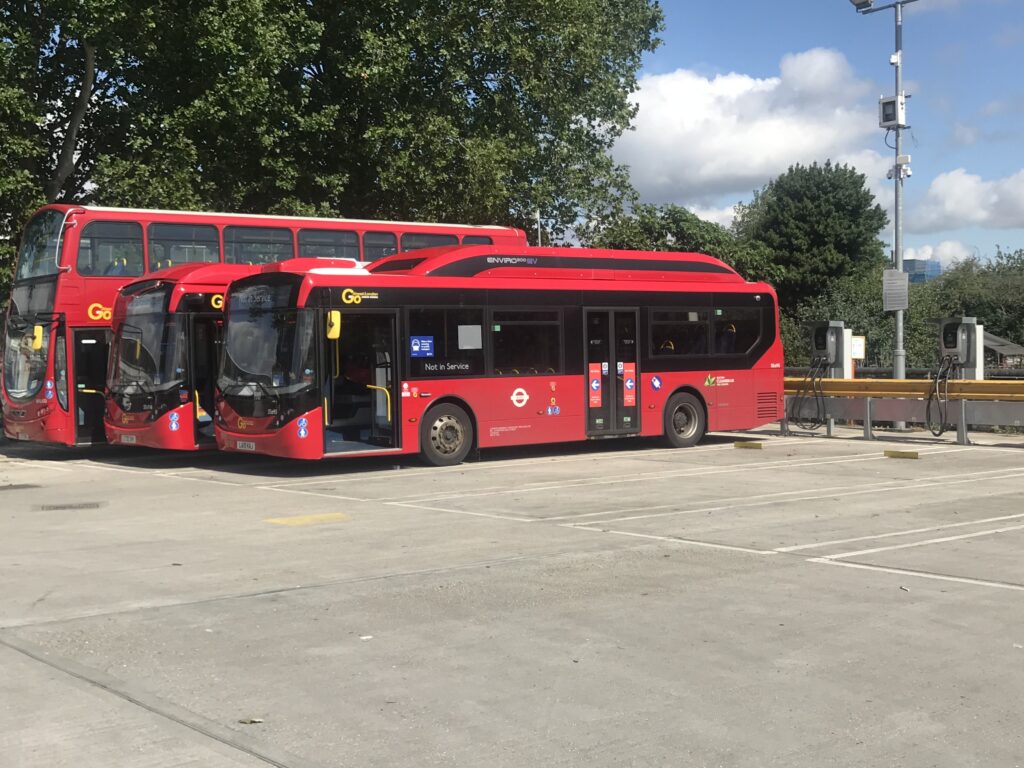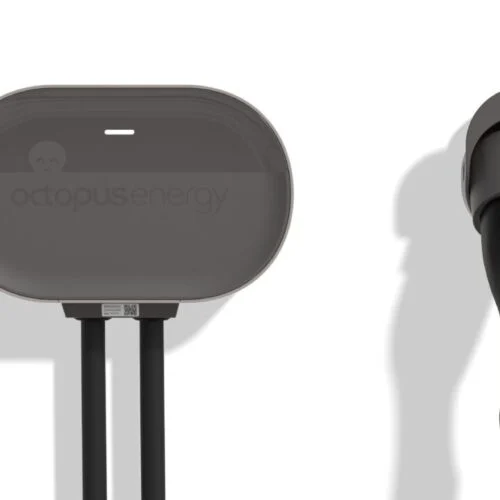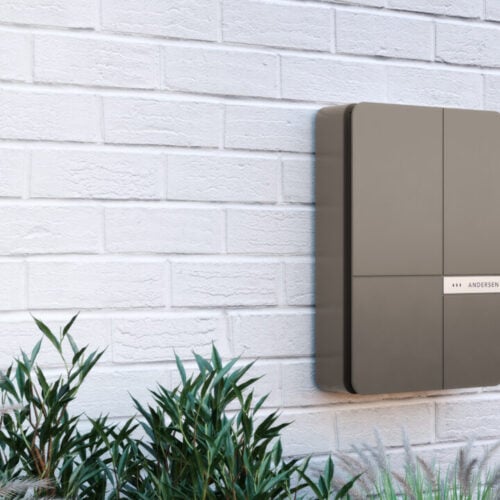The world’s largest vehicle-to-grid (V2G) project has been launched at a north London bus garage.
Nearly 100 new zero-emission electric buses will be run from the Northumberland Park garage, which has been transformed with chargers that will be used for the Bus2Grid project.
Initially, it will use batteries from 28 of the state-of-the-art double decker buses to trial V2G systems, which are capable of returning 1.1MW energy to the grid to provide balancing services. The buses are adapted BYD ADL Enviro400EV, double deckers, each with a 382kWh BYD lithium iron phosphate batteries.
The buses are AC charged with 2 x 40kW on-board-chargers, which means that it’s a mobile discharge facility. From a technical standpoint, this therefore has implications for satisfying G99 requirements – within which generators must have a voltage control system to inject or absorb reactive power into the grid so that it can control voltage – and is a specific project challenge. It should result in the first ever G99 certification for such a large scale mobile energy generation type, according to SSE.
Most other V2G projects use DC (CHAdeMO) charging, therefore requiring only the ChargePoint and associated inverter – which does not move – to be certified rather than the vehicle.
It is being led by SSE Enterprise in partnership with the Mayor of London, Transport for London (TfL) and Go-Ahead London. The project has received funding from the Department for Business, Energy and Industrial Strategy (BEIS) and the Office for Low Emission Vehicles (OLEV) with support from Innovate UK, and will run for three years.
Niall Riddell, smart systems innovation sector director for SSE Enterprise, said decarbonising transport was central to both achieving climate change targets and optimising flexibility.
“Developing a charging infrastructure that operates in two directions so that batteries can give back as well as take from the grid is an important part of this.
“SSE Enterprise is proud to have electrified most of the bus garages in London that operate electric buses. Delivering the Bus2Grid project is the next natural step in using smart technology to make bidirectional charging the reality for today’s bus users.”
In London, there is a bus fleet of around 9,000 vehicles, which could be converted to be used in the Bus2Grid project going forwards. Theoretically these could provide enough energy to support more than 150,000 homes.
The transition to electric buses in the capital began in 2013, with Go-Ahead London chosen by TfL to provide the vehicles. There are now 240, making it the largest e-bus operator in Britain.
Dr Stephen Hall from the University of Leeds, one of the project partners, said: “Electrifying transport will have huge benefits for air quality in cities and for meeting our climate change commitments. Large electric vehicles like these can also support the energy system, but this means creating new ways of working between energy utilities, grid managers, and transport providers. This project is creating new business models to make this happen.”
Further support for the project is coming through partnerships with bus manufacturer Build Your Dreams/Alexander Dennis Limited (BYDADL), electricity distribution network (DNO) UK Power Networks (UKPN) and Leeds University with aggregation of the buses supported by Origami.
According to UKPN, which operates most of the distribution network in London, there will be more than 3.6 million EVs connected by 2030. This will be a major increase from the 95,000 vehicles currently in the region, creating significantly more demand, and pushing it to look for alternatives to expensive infrastructure upgrades, such as V2G.
Ian Cameron, head of innovation at UK Power Networks, said they believed buses have a “big part to play” in rolling out low emission vehicles.
“They offer huge opportunities to contribute towards the drive to improve London’s air quality.
“A fleet of bus batteries harnesses large amounts of electricity and they are habitual, with regular and predictable routes, driving patterns and timings. That means we can easily predict and plan for how we can use any spare electrical capacity they can offer. For example, we could use them as energy storage devices that could add capacity and help us to increase the volume of renewable energy exported onto the network when supply might otherwise be exceeding demand.”
V2G has “huge potential” beyond just financial benefits according to a recent review of nine European V2G projects by Cenex. It’s not surprising therefore that an increasing number of companies are exploring it, with projects launched by E.On and Nissan, WPD and Moixa, Honda and Islington Council, amongst others this year.






